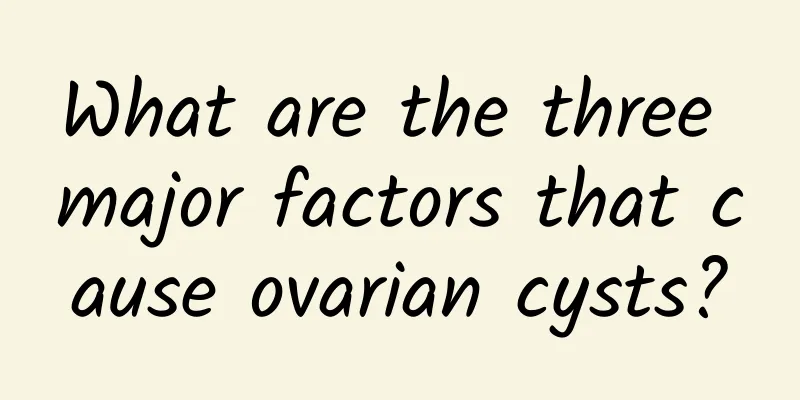Why is congenital absence of vagina difficult to cure?

|
Congenital vaginal embryos are obstructed by internal or external factors during development, or may be caused by abnormal development of the paramesonephric duct due to gene mutations (may have a family history). The most common patients are Rokitansky-Kustner-Hauser syndrome, which is characterized by normal female chromosome karyotype, normal systemic growth and development of female secondary sexual characteristics, normal vulva, vaginal absence, uterine development (only bihorn remnants), small fallopian tubes, and normal ovarian development and function. Testicular feminization (androgen insensitivity syndrome) patients are relatively rare. Very few are true hermaphroditism or gonadal dysgenesis. The principle of treatment for congenital absence of vagina is to reconstruct the vagina. There are various methods for artificial vaginal formation, including non-surgical treatment, which is to use the method of top pressure to gradually push the closed vestibular mucosa in the normal vaginal position toward the head end along the vaginal axis to form an artificial cavity. This method requires a long treatment time and the artificial vagina formed is short. If the tissue elasticity is poor, it is difficult to succeed. It is now basically abandoned and rarely used. Surgical treatment mainly separates the urethra, bladder and rectum to form an artificial cavity, and uses different methods to find an appropriate cavity wound covering to reconstruct the vagina. In previous years, the most commonly used method was the patient's own medium-thickness free skin graft, but after surgery, a hard vaginal mold needs to be used for a long time to expand the artificial vagina to prevent the artificial cavity covered by the transplanted skin graft from contracting, which increases the patient's pain and brings great inconvenience to work and life. Moreover, the difference in the characteristics of skin and mucosal tissues is too great, and it does not meet physiological requirements, which is its biggest disadvantage. Vaginoplasty with labia flaps destroys the normal vulva shape and is often rejected by patients. Reconstruction with sigmoid colon or ileum segments increases the complexity of the operation. Covering with amniotic membrane or pelvic peritoneum also has its own disadvantages. Therefore, although there are many methods, there is still no very ideal shaping surgery. The choice should be mainly based on the local anatomy of the patient's vulva and other specific clinical conditions. In recent years, with the progress of microsurgery, vascularized myocutaneous flaps have been used to cover the cavity, opening up a new way for this operation. Its advantages and disadvantages need to be promoted before a conclusion can be drawn. |
<<: Is there a cure for congenital absence of vagina?
>>: Can congenital absence of vagina be completely cured?
Recommend
Pregnant moms love to eat but are afraid of getting fat. Nutritionists' low-calorie snacks come to the rescue
"Honey, I suddenly want to eat the fried chi...
What to eat to prevent uterine fibroids from recurring? What to eat to prevent uterine fibroids from recurring?
Uterine fibroids are common benign tumors in gyne...
What is the cause of vulvar leukoplakia?
Many people have heard of vulvar leukoplakia and ...
What should I do if I find uterine fibroids at 25 weeks of pregnancy?
Uterine fibroids are tumors of the female reprodu...
What are the main causes of pelvic inflammatory disease?
Gynecological diseases such as pelvic inflammator...
What are the dangers of pregnancy with uterine fibroids? Will pregnancy with uterine fibroids have adverse effects on fertility?
Pregnancy with uterine fibroids has adverse effec...
What are the common causes of cervicitis?
Cervicitis is a common gynecological disease amon...
Subvert your impression! Is drinking beer good for your health? 4 unexpected health benefits
Maybe you often see beer of different brands and ...
How many days is the best time to do painless abortion?
There is no such thing as “the best time” for pai...
Cervicitis in detail
Are you familiar with cervicitis? If not, then yo...
Eating lettuce salad won’t make you fat? Cold stomach may lead to obesity
People with spleen deficiency and lung qi deficie...
How to treat pelvic inflammatory disease after abortion? In addition to treatment, you also need to know 3 nursing methods for pelvic inflammatory disease.
Once you have pelvic inflammatory disease after a...
Experts reveal how to effectively prevent chronic pelvic inflammatory disease
As the number of patients with chronic pelvic inf...
The main causes of pelvic inflammatory disease in women
Pelvic inflammatory disease is a common gynecolog...
What can I eat to eliminate uterine fibroids? Do uterine fibroids affect fertility?
What to eat to eliminate uterine fibroids Uterine...









